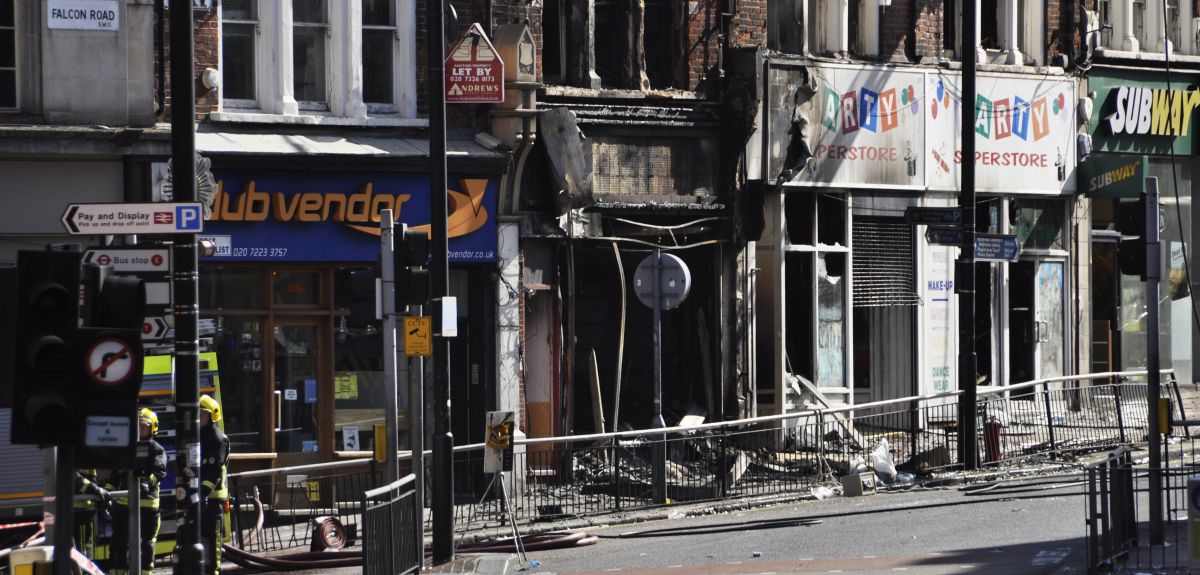
London rioters linked to areas 'where there were tensions with police'
Oxford University sociologists have examined the causes of the London riot of 2011 and find that tensions between the police and the community in the areas where the rioters lived were a significant factor.
Using anonymised data from the Metropolitan Police, they mapped the home addresses of more than 1,600 people charged with rioting, linking them with surveys of public attitudes towards the police carried out in different boroughs before the riots. The researchers show that rioters were more likely to come from boroughs in which local people had said they perceived a lack of respect from the police. The findings are published by the Oxford University Press journal, Social Forces.
Thousands rioted in London in August 2011, with the police losing control of parts of the city for four days. More than 3,000 people were subsequently arrested. Unlike many recent riots in the United States and Western Europe, the London riot was not focused on ethnic grievances, the paper points out.
The study was conducted by Juta Kawalerowicz and Associate Professor Michael Biggs from Oxford University’s Department of Sociology. They mapped the home addresses of the rioters on to 25,000 neighbourhoods (as defined by the 2011 Census) across Greater London. The Census provides information on the social and economic characteristics about each neighbourhood. The rioters’ addresses were also matched with surveys from each borough carried out with the public by the Metropolitan Police in a six-month period before the riot (January to June 2011). One question asks: 'How well do you think the Metropolitan Police treat people with respect?' Possible answers ranged from 'not at all well' to 'very well' (scoring on a scale from 1 to 7). Rioters were more likely to come from boroughs with lower scores on this question after taking into account other factors such as poverty and ethnicity. The research shows a link between rioters and the boroughs across Greater London where surveys showed tensions with the police, not just in Haringey where the riot began.
Co-author Juta Kawalerowicz said: 'One significant factor influencing rioting was the local community’s prevailing attitude towards the police. We find that rioters tended to come from boroughs where local people felt that the police did not treat them with respect. Of course most people in those boroughs did not riot, but we suggest that rioters may have felt more inclined to engage in such activities in areas where they may attract less condemnation from the local community.'
The researchers also measured community cohesion in the different areas across London, using indirect measures (as used in previous research by scholars in the United States). According to one theory, people find it more difficult to build relationships and develop trust with others in an area where residents are divided into many ethnic groups. The Oxford researchers found that ethnic diversity in areas of London increased the probability of rioting, after taking into account other economic and social factors.
The other indirect measure of community cohesion is the concentration of charities in proportion to population. The theory is that involvement in voluntary associations, of whatever kind, improves social networks and makes those involved care more about the collective good. The researchers used the Charity Commission’s database, which covers a wide range of organisations from local churches and mosques to large charities like Amnesty International and the Scouts. The researchers mapped the address of each organisation’s contact person. They found that rioters were more likely to come from wards with relatively few charities.
The study also supports previous research showing a strong link between rioting and poverty. The researchers measured poverty or deprivation using a combination of factors such as unemployment and overcrowded housing. Rioters were much more likely to come from deprived neighbourhoods and from neighbourhoods in deprived wards.
Study co-author Michael Biggs, Associate Professor of Sociology, said: 'Our analysis pinpoints the neighbourhoods where rioters came from, allowing us to identify the factors that distinguished those places from the rest of London. We find that rioters were more likely to come from deprived areas, but what also mattered was community cohesion and relations between public and police.'
 Expert Comment: Chatbot-driven sexual abuse? The Grok case is just the tip of the iceberg
Expert Comment: Chatbot-driven sexual abuse? The Grok case is just the tip of the iceberg
 New study finds that stopping weight-loss drugs is linked to faster regain than ending diet programmes
New study finds that stopping weight-loss drugs is linked to faster regain than ending diet programmes